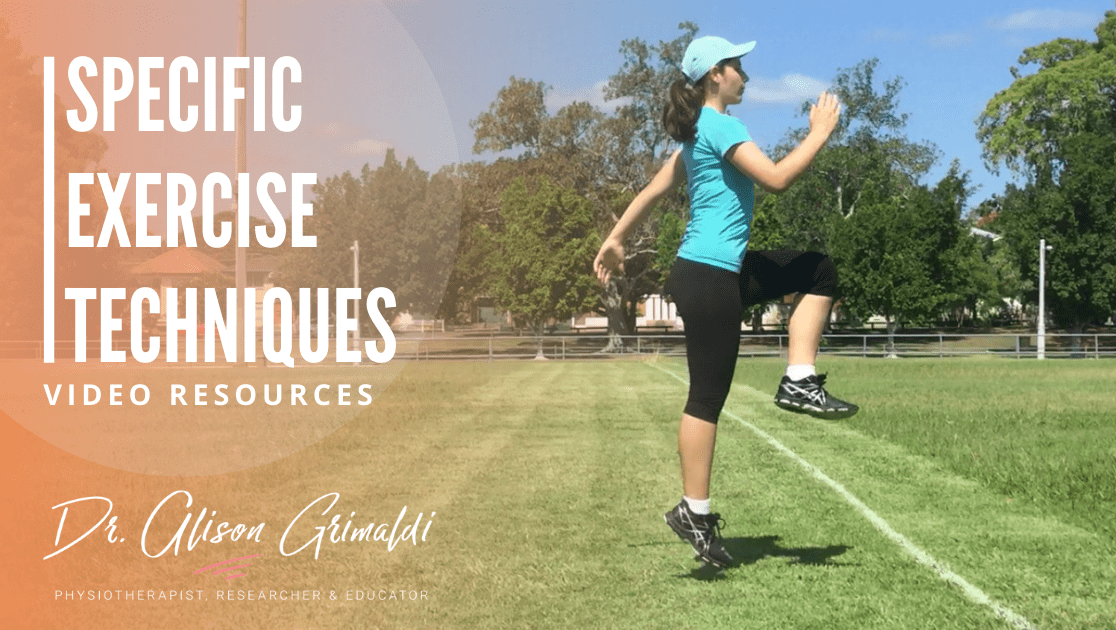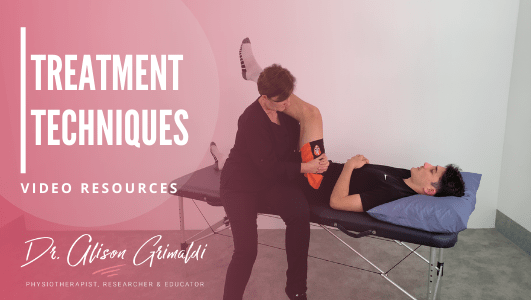Clinical Assessment Techniques
How-To Videos of diagnostic tests, stability tests, tests of general function & specific muscle tests
Within the Clinical Assessment Techniques video library, you will find how-to videos on a variety of clinical tests. This encompasses diagnostic/pain provocation tests for various conditions of the hip and pelvis and clinical assessments of joint stability, range of motion and muscle function.
This library works perfectly either as an accompaniment or following an online course or workshop, enabling you to quickly learn or refresh your memory regarding application of clinical tests.
Muscle tests
Videos of a variety of muscle tests are showcased.
- Strength tests using standardised and reliable hand held dynamometry techniques
- Resisted muscle tests that guide diagnosis of soft tissue related pain around the hip and pelvis
- Assessments of normal hip muscle patterning will also be coming soon to this category
View a sample below
Diagnostic tests
Want to improve your differential diagnosis of hip, pelvic and groin pain. This video library includes demonstration of performance of pain provocation tests for:
- joint related pain
- soft tissue related pain
- nerve related pain
View a sample below
Joint Stability Tests
Joint instability occurs even in the deepest joint in the human body. This may be related to trauma and/or morphological, movement and muscle factors. While frank instability is less common than in the shoulder or patellofemoral joint, microinstability or focal overload is not uncommon, particularly in the context of impingement at the other aspect of the joint. Those with femoroacetabular and ischiofemoral impingement may present with co-existing subtle instabilities. In this video library, stability tests for the anterior and posterior hip joint are demonstrated.
View a sample below
Range of Motion
Range of motion assessments are useful measures of impairment or indicators of morphological variations such as femoral malversion and those leading to early femoroacetabular impingement.
View a sample below
Neurodynamic Tests
Neurodynamic tests assess aspects of nerve health by evaluating range of motion and reproduction of symptoms. These symptoms are usually provoked when the nerve is put on tension and can be relieved by reducing nerve tension, even by moving a site distant to the area of pain. Such tests are useful when a patient has a nerve related quality to their pain and/or paraesthesia or dysaesthesia.
Neurodynamic tests included in this library:
Sidely slump - femoral nerve and branches
Sidely slump - obturator nerve
Seated slump test with seated piriformis stretch test
The Ultimate How-To Library

Designed for Physiotherapists, Musculoskeletal Healthcare Practitioners and Exercise Professionals involved in rehabilitation of hip, groin and pelvic pain or dysfunction.
This video library is ONLY available in
Hip Academy Membership



